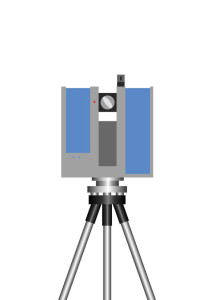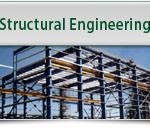 Laser scanning technology is growing fast in the construction industry around the world. By collecting vast data sets, laser scanning allows architects and engineers to create data-rich, detailed 3D models that are far more accurate than models built by even the most sophisticated CAD models that are based on traditional surveying methods.
Laser scanning technology is growing fast in the construction industry around the world. By collecting vast data sets, laser scanning allows architects and engineers to create data-rich, detailed 3D models that are far more accurate than models built by even the most sophisticated CAD models that are based on traditional surveying methods.
Users of this technology are finding new applications in building, maintenance and restoration. This week, we take a closer look at some of the latest applications of 3D laser scanning.
Laser scanning at work
Laser scanning is a method for measuring existing structures or undeveloped space with high precision, far faster than with traditional surveying methods. A 3D laser scanner sweeps a laser beam across an area. It measures the reflected beams millions of times in a few minutes.
Then, the scanner is moved to a different vantage point, and the scanner measures from a new perspective, collecting millions more data points.
These measurements are then collected into a comprehensive database and used to create a highly accurate 3D model, similar to traditional CAD models. These models are far more detailed and accurate than can be made with traditional surveying methods.
The output
These accurate and rich models allow better, more efficient planning. For example, a scan of an undeveloped site can reveal not only highly accurate topology, but the fine details can also uncover features that might be undetected by the naked eye, such as underground water features, soil characteristics and more.
The models can create visualizations of a new building in an existing built environment, before the first shovel hits the ground. Architects, engineers, developers and owners can do a virtual walk-through or even “fly-through” of a building ahead of time, allowing them to make better decisions about design and construction.
The detailed and accurate models created by laser scanning data enhances training, by allowing users to work through their tasks in a safe, virtual environment. The result is better performance at the actual work site, with fewer errors.
Other applications of laser scanning models include:
- interference detection
- containment analysis
- construction and demolition plans
- move plans
- inventory management
- deformation analysis
Laser scanning at work
Engineers and designers have been taking laser scanning to the next level internationally with some truly interesting applications.
The world despaired when Notre Dame Cathedral in Paris, France, burned last April. Fortunately, 10 years ago, an architectural historian and a computer scientist made a complete 3D laser scan of the inside and outside of the World Heritage Site, collecting more than a billion data points. They also used a digital camera to take high-resolution panormanic photos that they overlaid over the 3D scans.
The result is a digital 3D model of the historic site, including its famous network of 12th-century roof beams. This could be used to restore the cathedral to something approaching its former glory. The only problem is that the terabyte-sized data file has been misplaced. Because the data was collected 10 years ago, it predates the cloud. The files are probably on a thumb drive somewhere. The challenge now is to find it.
A company that operates a normally unmanned oil drilling platform in the North Sea needed to make upgrades to some equipment, and wanted to minimize the downtime needed to do it. Their engineering consultants used laser scanning to create a “digital twin” of the platform. This allowed the company to use virtual reality (VR) technology that immersed the people who would install the upgrades into the digital model environment. The personnel virtually interacted with the digital twin, and learned and predicted how to do the upgrades. They also became more familiar with the platform, equipment and required tasks in a safe environment.
The result was a speedier upgrade that minimized the required shutdown with no unexpected outages or delays.
Preserving World Heritage Sites
The Open Heritage Project, started by San Francisco-based engineer Ben Kacyra, uses 3D scanning, digital imagery, drones and virtual reality to create open-source visual representations of culturally important sites around the world. They aid in preservation, maintenance and even restoration of these often ancient structures.
The project has done a range of applications, such as:
- the Lincoln Memorial in Washington, D.C.
- Mayan ruins of Chichen Itza in Mexico
- Temple of Apollo Portara, Greece
- Church of St. Sophia, Ohrid, North Macedonia
- Baganin temple, Myanmar
- Neolithic archeological sites in northern Europe
Use laser scanning today
Using laser scanning can save you money on your next project. You can get a comprehensive, highly detailed model of your property, buildings and other structures. The models can help you better plan construction, maintenance and repair. You can visualize new developments before beginning construction and develop plans that are more efficient and avoid conflicts and delays.
At McNeil Engineering, our 3D Laser Scan team has extensive technical experience in creating tailored solutions for clients. Call us before starting your next plan to see how it can help you.








